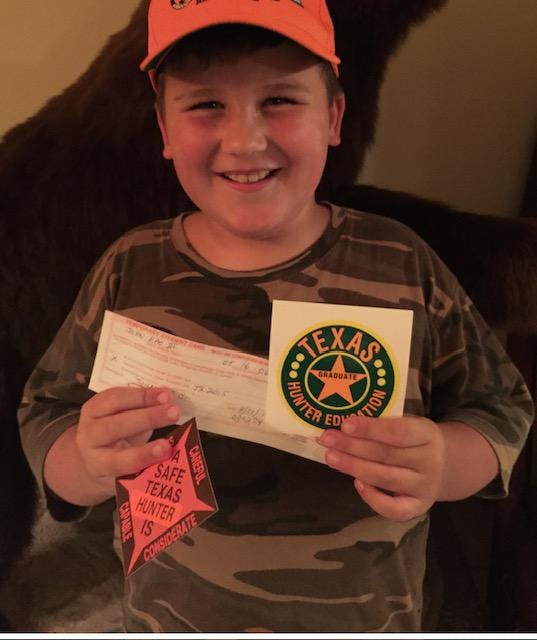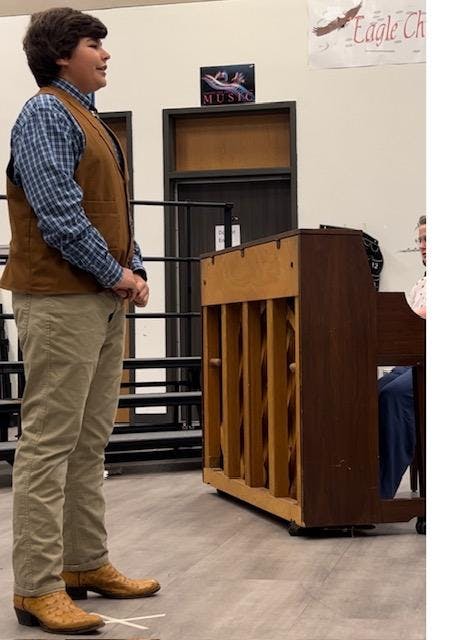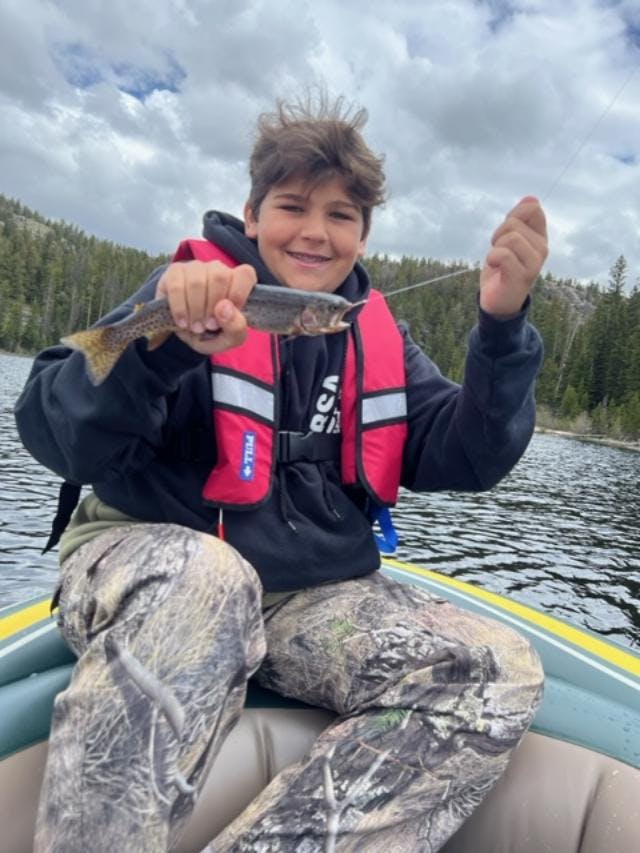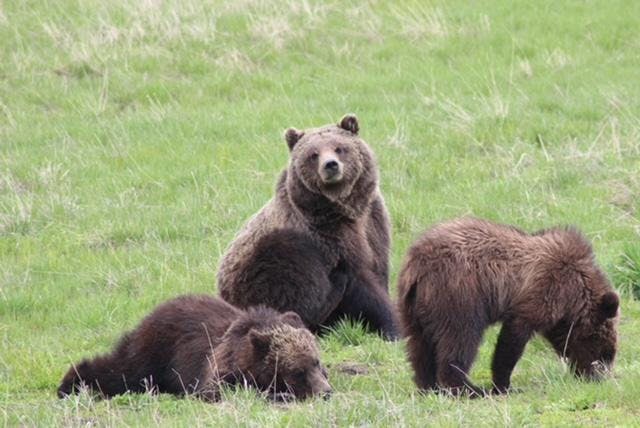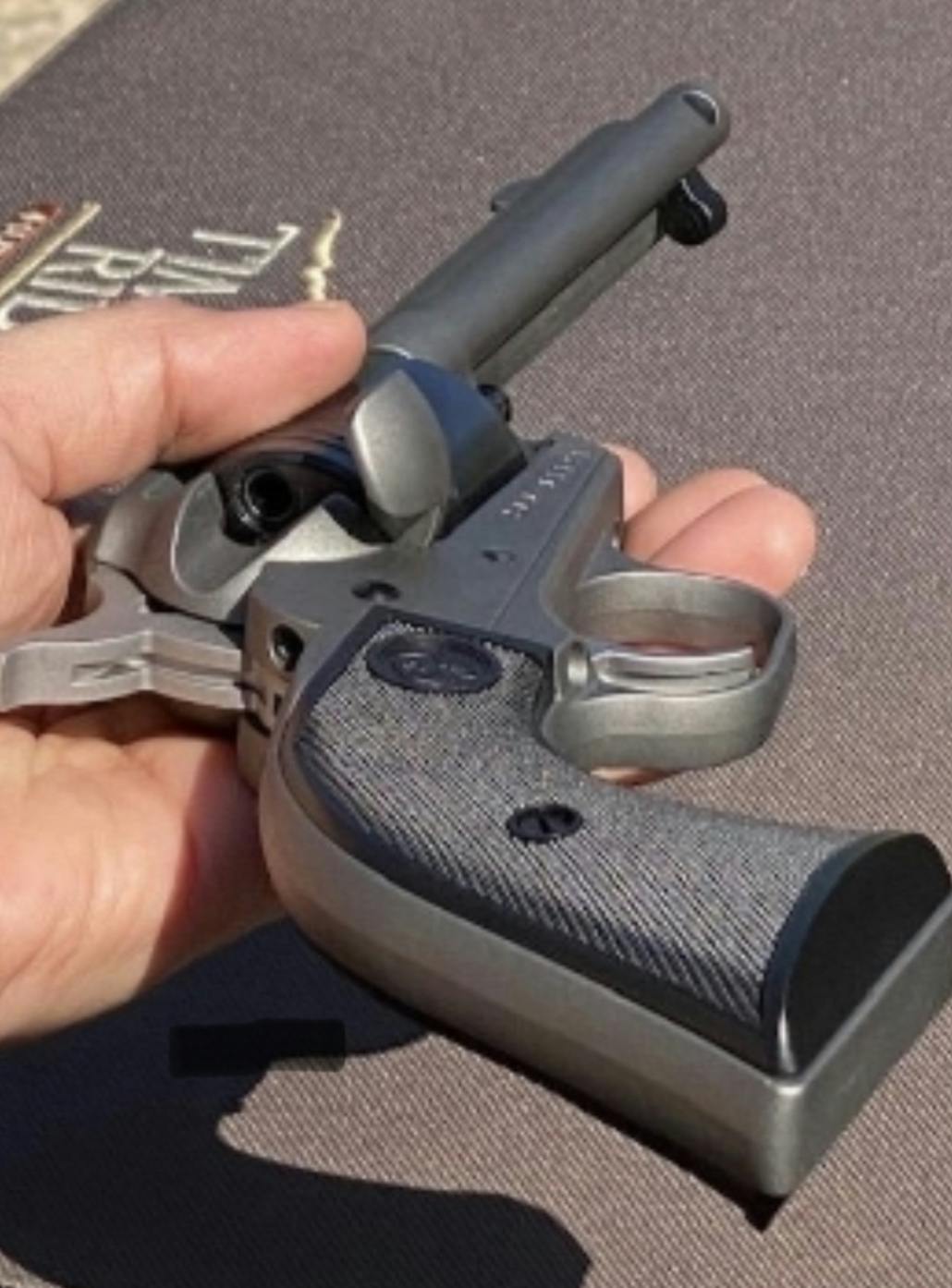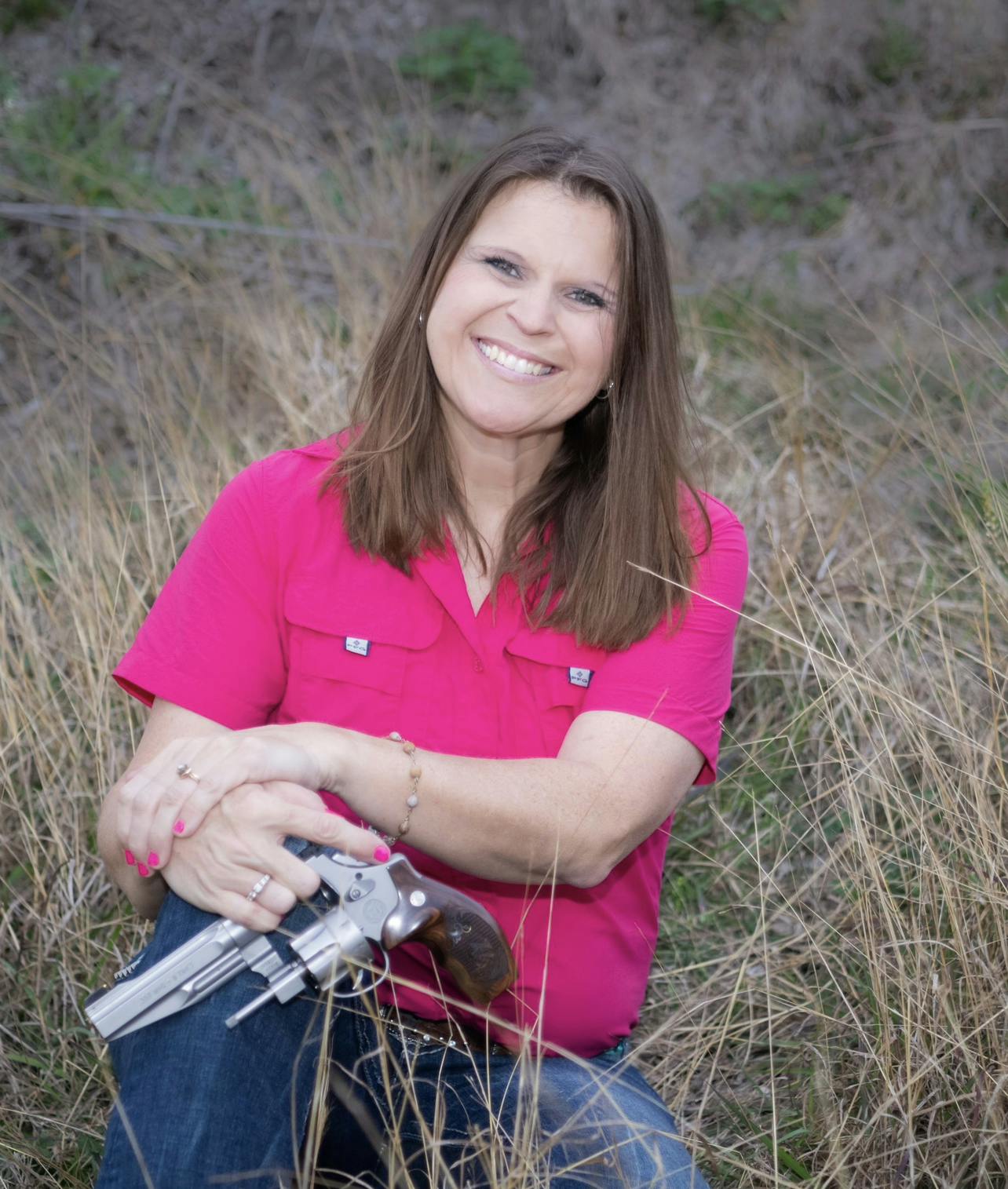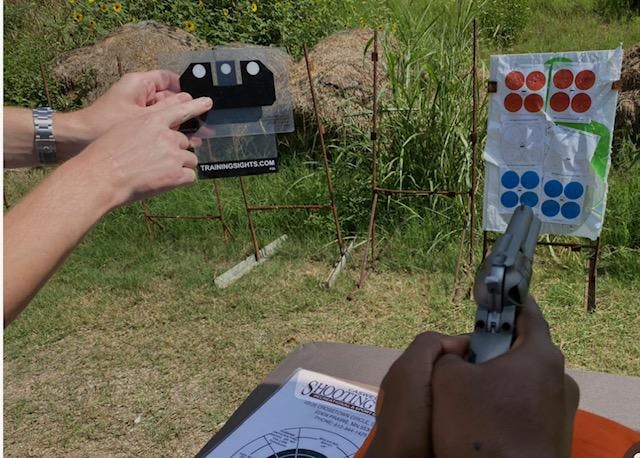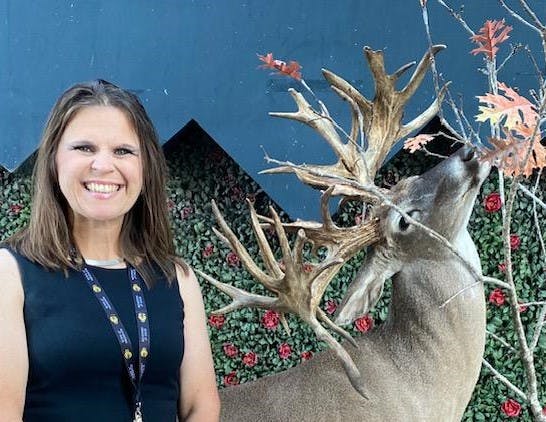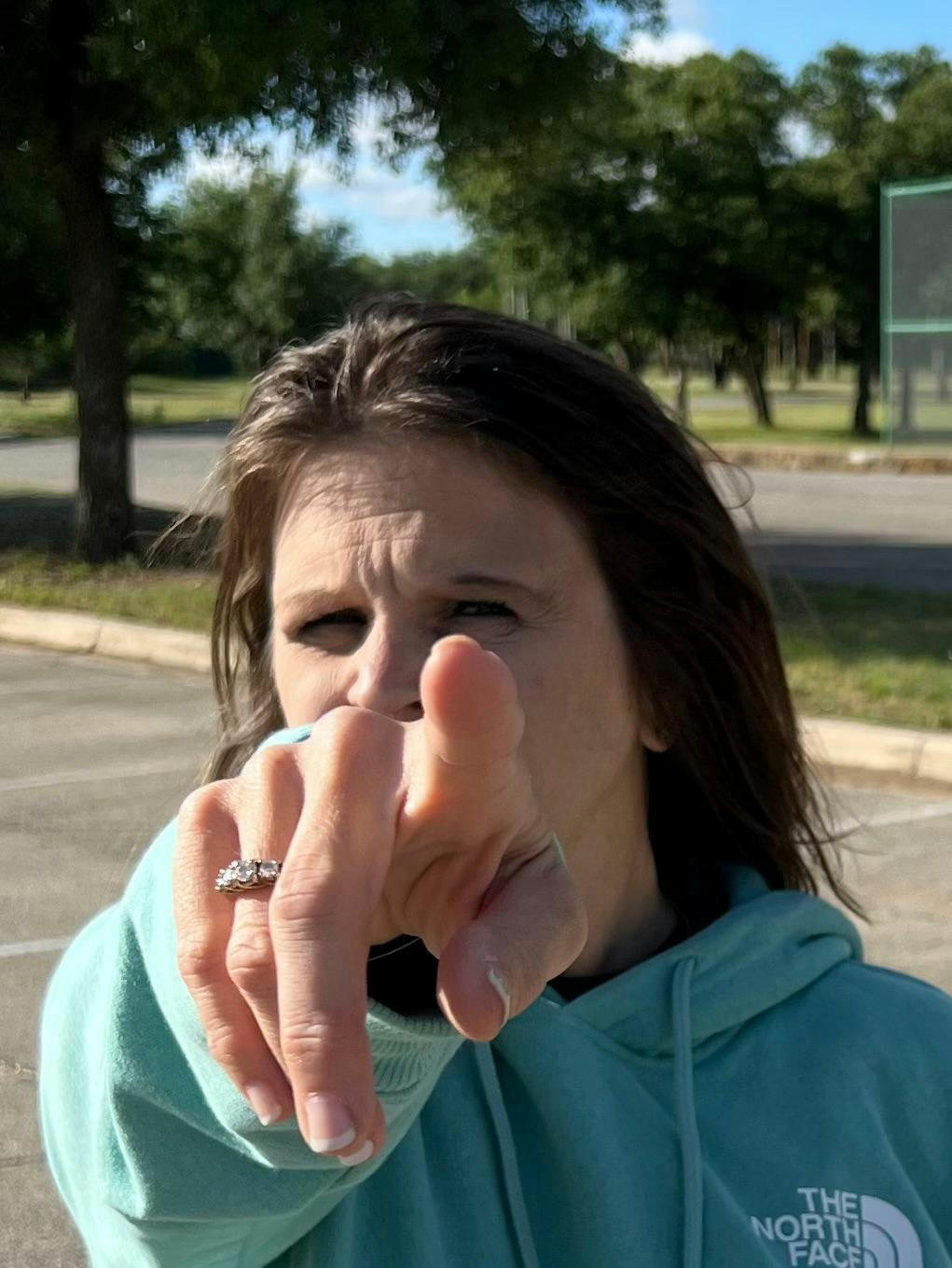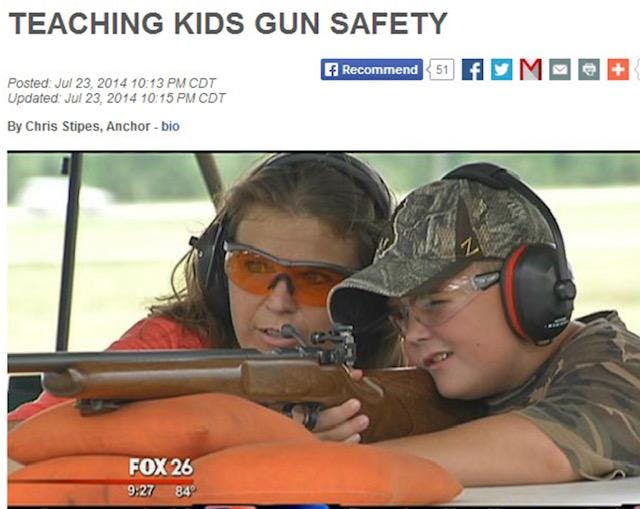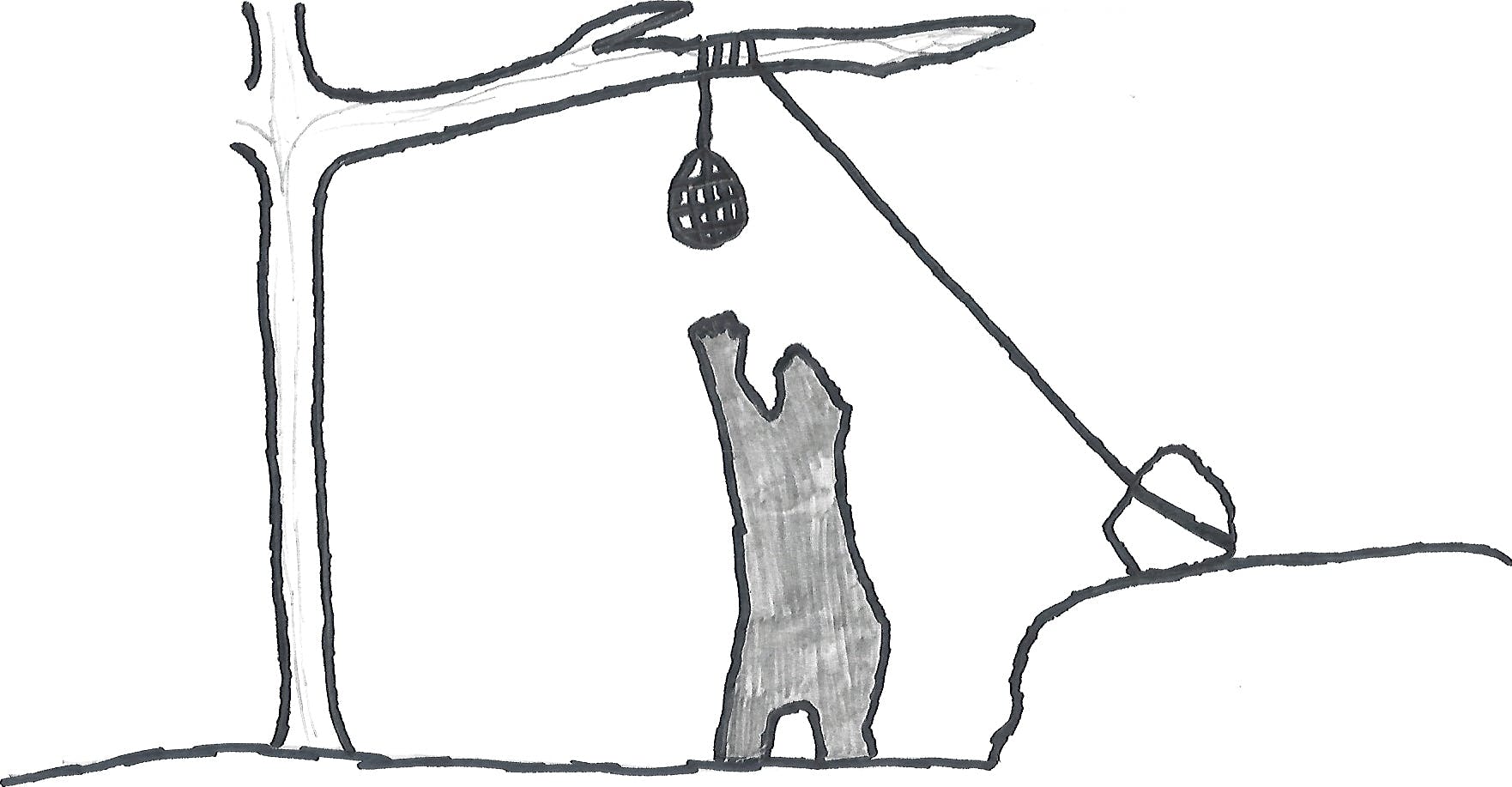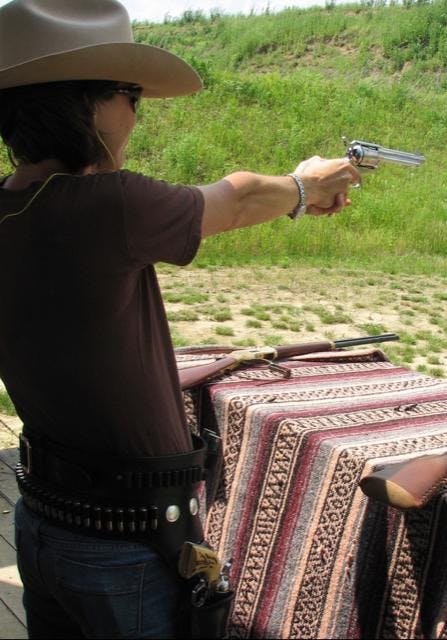Discover North American Outdoors
North American Outdoors

North American Outdoors
Author: Heidi Lyn Rao
Subscribed: 7Played: 122Subscribe
Share
© 2022 North American Outdoors
Description
Tips, techniques, videos, articles, and many other "HOW TO" do all things outdoors from hunting, fishing, camping, trapping, shooting, and much more! There is no better place to learn than in the outdoor classroom...roaming the woods and waters, creating memories that will last a lifetime.
175 Episodes
Reverse
Heidi Lyn Rao was hired by Texas Parks and Wildlife Department (TPWD) in 1998 and has recruited, trained, and retained volunteers, as the Hunter Education Specialist for Southeast Texas. In 2010 she also assumed the role as statewide Becoming an Outdoors-Woman (BOW) Coordinator.
During her TPWD career, she developed many partnerships and organized many education & outreach events. She started “Take Me Outdoors Houston” in 2009, when the Texas Wildlife Expo ended, and brings this annual family-friendly, free, hands-on outdoor event to Discovery Green, Downtown Houston. She hosts wildlife workshops ranging from alligators to big game. She promotes hunting and outdoor safety to groups ranging from elementary-school aged to flying offshore via helicopter to speak to oil and gas employees in the middle of the Gulf of Mexico on a platform. From teaching firearm safety to Rodeo Clowns during the Houston Rodeo, to hosting Hunter Education classes at the Sam Houston (horse) Raceway, conducting National Archery in the Schools Program and Student Air Rifle certifications, and partnering with many hunting, shooting and conservation organizations across Texas.
She has coordinated 27 statewide BOW workshops across Texas, including the first-ever VIRTUAL BOW in 2020. She has reached over 7,000 Ladies who have attended BOW and continued their outdoors skills ultimately becoming hunters, anglers, and archers, especially through mentored BOW hunts. To date, 10 Texas Outdoor Women Network (TOWN) groups have launched across the state because of the statewide BOW.
She received IHEA’s Professional of the Year; IHEA’s Executive Director’s Award; TPWD’s Terry Erwin Hunter Education LEGACY award, Houston Safari Club Educator of the Year and she is also in the Texas Hunter Education Halls of Fame.
She and her (now retired) TPWD Game Warden husband of 25 yrs., John, have 4 boys: Dominic is 21 and works for Laser Shot Simulations in Houston; Matthew is 20 and is a sophomore at the University of Arkansas with a 4.0 and on his way to be a large animal vet; JohnJohn is 17 and is a Junior; and Luke is 14 and is in 8th grade. The Rao’s are avid hunters and enjoy camping, trapping, and the shooting sports together.
Learn more about your ad choices. Visit megaphone.fm/adchoices
Hunting season is not only for adults. Many kids look forward to getting in the field with their parents, grandparents, uncles, aunts, or any other adult role model. This is especially true if it is a kid’s first-time going hunting. Unfortunately, many adults do not understand what a huge responsibility this is. What happens on a kid’s first hunt can be a big factor in his or her decision to continue hunting.
The next generation of hunters are who will ensure that our hunting heritage continues. It is up to us to make sure that we recruit this new generation. How we recruit this next generation makes a difference. Adult mentors must take their role seriously. This means dedicating the time, expense, and providing the right equipment to first-time hunters for the best outdoor experiences.
Learn more about your ad choices. Visit megaphone.fm/adchoices
From as early as he could talk, he could sing! Luke loved to belt out the latest and greatest songs from an early age, and fortunately that has continued until his early teenage years. I can only hope he continues his journey growing his voice and talent! He's been in choir during elementary and middle school - and has earned solo spots over the years.
Although he was a bit hesitant, he quickly overcame his shyness after he warmed up his pipes! We do not own the rights to any of these songs - only using them in the background so Luke could sing along and keep the rhythm. Enjoy!
Learn more about your ad choices. Visit megaphone.fm/adchoices
Ever since Luke was a baby, our family takes an annual summer vacation to Yellowstone National Park. Over the years we've ventured further and further around the local communities throughout Wyoming and Montana in search of the best fishing spot. His memories have always included a summer adventure to the Northwest and across the woods and waters of the great outdoors.
We did what we could, fishing the banks and shorelines with the gear we had. Without much luck, we learned from our mistakes and struggles, and each year we did a little bit better. We'd visit with the local sporting goods stores, grocery stores which doubled as bait shops, and chatted with the individuals who lived in the communities. We'd gather tips and tricks, and heard of great spots to add to our fishing 'bucket list.'
This year we did something completely different - we bought an inflatable boat! We were tired of watching from the shoreline, everyone else catch fish on their boats over the years. We wanted to be "those people" too! And we were! It was one of the best trips we'd ever been on, and Luke said so himself! Enjoy!
Learn more about your ad choices. Visit megaphone.fm/adchoices
One of the most visited National Parks in the world is Yellowstone National Park, located in Northwestern Wyoming. Yellowstone is an incredible place to view wildlife. All the large mammals that were present when Yellowstone first became a National Park in 1872, are still roaming the landscape today.
These wildlife species include grizzly and black bears, wolves, mountain lions, elk, bison, pronghorn, moose, and bighorn sheep. Not to mention the hundreds of other species ranging from birds to small mammals, reptiles to amphibians and aquatic life. For these larger animals, there are rules in place to keep not only the visitors safe, but the wildlife safe as well.
There are strict guidelines in place to keep everyone and every animal safe. One of the most important rules strictly enforced in National Parks is to never approach wildlife. If you are hiking or picnicking in an area and you see wildlife emerging nearby, leave the area safely. Never follow or approach an animal to attempt to touch it or try to get closer to it to take a picture.
Never feed a wild animal. If a wild animal is fed by humans, they may soon become desensitized to people and start approaching humans and become aggressive, resulting in the animal being trapped, relocated, or dispatched and removed from the population to prevent future human encounters. There is a saying “a fed animal is a dead animal.”
Be a courteous and respectful wildlife watcher. Those around you are doing the same. Wildlife is here for everyone to enjoy. Those who abuse that privilege not only risk their own safety but the safety of the animal and rob others of the enjoyment of viewing these magnificent creatures. When an animal is removed from the population because someone did not follow the rules, the next generation of that animal is lost.
Learn more about your ad choices. Visit megaphone.fm/adchoices
We all take our safety and security seriously when we are at home, going to and from work, and while running errands around town. Sometimes we let our guard down and are lax when we go on vacation. Afterall, vacations are supposed to be fun and carefree, and a time when you should not have to worry about your safety and security. Many times, when you are on vacation, these are the times when you are most vulnerable and need to be most focused on safety.
Depending on your destination there are certain things you need to be aware of. Many times, based upon your activities and what you are doing, you may need more than one firearm and different types of ammunition. Just like when you are at home, there is not one firearm for all purposes, just as there is no one correct type of ammunition for every purpose. Do your research and plan accordingly.
There are four areas you need to be concerned with when vacationing with a firearm.
1. Know the laws in all the jurisdictions that you will be in;
2. Traveling to your destination;
3. What to carry while at your destination; and
4. Knowing the correct ammunition to carry to address the potential threats you may encounter while at your location.
For many, summertime means vacation time. The last thing we want to happen while we are enjoying our time off is an unexpected encounter with a deadly threat. Do your research and be prepared. The safety of you and your loved ones depends on it.
Learn more about your ad choices. Visit megaphone.fm/adchoices
When I conduct a basic rifle class or lesson, I will get questions regarding trapdoor, rolling block, and falling block rifles. The questions will not be centered on the types or the operation of these rifles. Rather, the questions will be much more basic. Most of my students will have a puzzled look on their faces and ask, “What are these?”
If a student likes old guns and history, he or she knows what I am talking about when I mention trapdoor rifles, rolling block rifles, or falling block rifles. Unfortunately, most new gun owners are more interested in the latest and greatest innovations in firearms, not the classic guns that paved the way. Knowing and understanding these “primitive” firearms leads to the admiration of the soldiers who had to use them.
Single-action revolvers have a storied past that many young shooters are unaware of. Samuel Colt patented the first functional revolver in 1836. That is the year Texas won its independence from Mexico.
Single-action revolvers are still in use today and are still very popular with gun enthusiasts. Colt, Ruger, and many other gun manufacturers still produce and offer new models of these “Old West” firearms. There are also Cowboy Action Competitions, where competitors use the classic single-action design in their events.
Many firearms trainers are starting to use single-action revolvers in their training. These firearms are proving to be invaluable in teaching new and old shooters alike, the proper knowledge, skills, and attitudes in properly and safely using a handgun.
Shooting a single-action revolver takes considerably more muscle memory than modern striker fire semi-automatic pistol. There are many more steps to follow from the time you load one to the time you fire it.
These firearms have a very interesting history. Trapdoor rifles, rolling block rifles, and falling block rifles as well as single-action revolvers should be on every gun enthusiast’s shooting wish list!
Learn more about your ad choices. Visit megaphone.fm/adchoices
In the shotgun world, trapshooting is a specific form of clay target shooting. Trapshooting is a game of movement, action, and split-second timing. It requires the accuracy and skill to repeatedly aim, fire and break the 4 1/4" disc which is hurled through the air at a speed of 41 mph, simulating the flight path of a bird fleeing a hunter.
Shooters need to know that we have our roots in shooting. We have a responsibility to teach others we come in contact with, train or introduce to the shooting sports, our shooting history, tradition and proud heritage.
Trapshooting started it all. Trapshooting began in England in the late 1700's using live birds placed in shallow holes or under hats. Lines were attached to the hole covers or hats and when the shooter called "pull" the cord was pulled, knocking over the hat and freeing the bird to make an elusive target.
We've come a long way in the development of biodegradable, environmentally-friendly clay birds and clay throwing machines.
Visit your local shooting club to meet the league or squad of trap shooters, watch them, interact with them, and ask questions. Soon you will be invited into this very competitive and challenging game of trapshooting that will keep you coming back to the range frequently and often to improve your skills!
Learn more about your ad choices. Visit megaphone.fm/adchoices
The 2nd Amendment is for all Americans, not just those who traditionally exercise their gun ownership rights. The 2nd Amendment was written by our framers to give everyone the ability to protect themselves from tyranny, and from those who seek to do them harm. There are many reasons why Americans own guns. Some of these reasons include hunting, recreational and competitive shootings, collecting, self-defense and for personal protection. But the most complete and thorough answer is because we can! We all deserve a “seat at the table” when it comes to gun ownership and gun rights.
Men dominate the market when it comes to firearms ownership, training, and even writing about this topic. Since men dominate the world of firearms, it would make sense that men have the most “seats at the table.” Generally speaking, this is because men own more firearms than women, take more training than women, and go to the range more often than women. But wait, do not give up hope!
The “table” is getting larger. Much larger! Women make up the fastest growing demographics in the gun world. It is important to remember that just because you deserve a seat at the table, does not mean you are going to get one! It takes more than pulling out the proverbial “chair” and just sitting down at the “table.” Like any subject matter, it takes work to become proficient in any topic. As an experienced participant in any activity, it takes research, dedication, training, and practice. Firearms are no different.
Unfortunately, we live in a world today where people equate watching YouTube videos with becoming proficient or an “expert” in any topic. There is no shortcut to excelling in any given activity. You have to put your time in.
Learn more about your ad choices. Visit megaphone.fm/adchoices
As we age, there are things that we cannot do as well as we could a few years ago. We all slow down, but it is the degree of that slowdown that affects how well we can instruct the next and younger generation. We all will, at some point, experience decreased strength, mental acuity, and stamina. This is just a fact of life!
Firearm Instructors, Trainers and Coaches are no different from any other type of instructors. Not only do instructors become physically and mentally compromised, but they become stale. This means that you get stuck in a rut. Everything changes; there are new advances in technology and equipment, and you have to become familiar with these new trends. Remember, your students are taking your course to learn about all types of firearms and actions, not just the ones you like.
There are ways aging instructors can stay relevant. It might just take changing the way you teach. Small changes can make a big difference in the quality of your class. There are techniques to deal with physical and mental changes, as well as things to avoid being stale that instructors can do. But remember, when all else fails, recruit a teaching partner. If you do not know anyone that is familiar enough with guns to help teach, you can always approach one of your more outstanding students and ask them if they are interested in “team teaching” with you.
Be mindful of your teaching techniques and style, stay current and recruit help when necessary!
Learn more about your ad choices. Visit megaphone.fm/adchoices
As an instructor, it is your responsibility to keep all your students safe, including those who may need a bit more special attention. Your responsibility of meeting the needs of your students begins long before the class starts. When you advertise a firearms training course, there is usually a way for potential students to register for the class or some type of communication between the individual seeking training and the instructor.
One of the first things I look at what someone registers for my class is their age. I also send an email to each student with the particulars of the class such as starting time, how to dress for live fire activities at the range, and asking if there is any special needs or request. If there is no request for special accommodation, I take it upon myself, based on their registration information, to ensure everyone’s needs are met. Many times, the individual is embarrassed to admit there may be vision, mobility, or any other issues normally associated with age.
I do my best to accommodate these individuals both in the classroom and on the shooting range to not only keep everyone safe, but to give my students the best experience they came to receive!
Learn more about your ad choices. Visit megaphone.fm/adchoices
According to author Ms. Morin, there are 13 things mentally strong people do not do. By following each of these items, you can become a stronger person in your daily life. Each of these items can relate to the outdoors and shooting sports, as we teach, learn and are always on the quest for training. Not only must we train ourselves physically, it is equally important to train mentally as well.
Do not waste time feeling sorry for yourself: Mentally strong people do not indulge in self-pity. Instead of dwelling on their problems, they focus on finding solutions and taking action to improve their situation.
Do not give away their power to others: Mentally strong people take responsibility for their own lives and choices, and do not allow others to control their emotions or actions. They recognize that they are in charge of their own destiny and make their own choices.
Do not shy away from change or avoid taking risks: Mentally strong people are willing to step outside of their comfort zone and take calculated risks to achieve their goals. They embrace change as an opportunity for growth and learning.
Do not focus on things you cannot control: Mentally strong people focus their time and energy on things that are within their control, rather than worrying about things they cannot change.
Do not worry about pleasing everyone: Mentally strong people recognize that they cannot please everyone and focus on being true to themselves and their values.
Do not dwell on the past or make the same mistakes repeatedly: Mentally strong people learn from their mistakes and use them as an opportunity for growth. They do not dwell on the past or let it define their present or future.
Do not fear alone time or being by yourself: Mentally strong people are comfortable being alone and do not depend on others for their happiness. They use alone time as an opportunity for self-reflection and personal growth.
Do not feel the need to be constantly busy or productive: Mentally strong people recognize the importance of rest and relaxation and do not measure their self-worth based on their productivity.
Do not expect immediate results or overnight success: Mentally strong people understand that success takes time and effort, and are willing to put in the work and be patient in pursuit of their goals.
Do not dwell on negative thoughts or let them consume them: Mentally strong people acknowledge their negative thoughts and emotions, but do not allow them to control their actions or decisions. They focus on positive self-talk and taking constructive action.
Do not make the same mistakes over and over again: Mentally strong people learn from their mistakes and take steps to avoid making the same mistakes repeatedly.
Do not ignore emotions or fail to express them: Mentally strong people are aware of their emotions and communicate them effectively to others. They do not bottle up their feelings or suppress them.
Do not give up easily or lose hope when faced with challenges: Mentally strong people are resilient and do not give up easily in the face of challenges. They remain hopeful and focused on finding solutions to overcome obstacles.
Some of these items come easier than others, but overall if you practice each of these 13 suggested items, you will be amazed at the results and your changed behaviors and attitude!
Learn more about your ad choices. Visit megaphone.fm/adchoices
Eye dominance is important when shooting a rifle or shotgun because it affects how the shooter aims and where the shooter places their shots. Eye dominance refers to which eye the brain primarily relies on for visual information, and it can be either the right eye or the left eye, and not necessarily the same as your dominant hand.
When shooting a rifle, the shooter must align the front and rear sights with the target and maintain that alignment while pressing the trigger. If the shooter's dominant eye is not used to align the sights with the target, the shooter may experience difficulty in aiming and may end up shooting inaccurately.
For example, if a right-handed shooter has a dominant left eye and uses their right eye to aim, they may have difficulty lining up the sights and could end up shooting to the left of the target. In contrast, if the shooter uses their left eye to aim, they will be more accurate and more likely to hit their target.
Therefore, it is important for a shooter to determine their eye dominance and use the corresponding eye to aim their firearm. This can be done through a simple eye dominance test, which involves pointing at a distant object with both eyes open and then closing each eye one at a time. The eye that remains fixed on the object when the other eye is closed is the dominant eye and should be used for aiming.
Knowing which is your dominant eye and shooting your rifle and shotgun on the shoulder which falls under that dominant eye, will significantly improve your shooting performance!
Learn more about your ad choices. Visit megaphone.fm/adchoices
Safety is the #1 priority on and off the range. Everyone must do their part to prevent accidents. When properly trained, firearm incidents are rare. Those that happen are the result of ignorance (lack of knowledge) and/or carelessness (not following safe gun handling procedures).
If we are trained and plan to instruct or coach others in the proper and safe use of firearms, we need to focus on Risk Management, which is a four (4) step process:
Identify risks,
Evaluate risks,
Select an approach to deal with risks, and
Implement the approach by reducing or eliminating the risk, avoiding the risk, accepting the risk, or transferring the risk to someone else.
We have a responsibility to the public and those we are working with, both on and off the range, around firearms. Failing to fulfill this responsibility is considered negligence. We are negligent if we fail to exercise skill and knowledge normally possessed by other like-minded trainers, instructors, and coaches.
When determining negligence, four (4) questions are asked:
Duty: Did you have a responsibility to the injured party in this situation?
Breach: Did you fail to fulfill this responsibility?
Damages: Was there an injury to the party to whom you owed the responsibility?
Causation: Did your failure to fulfill the responsibility cause the injury?
Learn about the nine (9) responsibilities and duties of a good trainer, instructor or coach to prevent negligence.
Learn more about your ad choices. Visit megaphone.fm/adchoices
Throughout history, people have depended on wildlife for survival: as a source of food, clothing, and even tools. Loss of habitat and other factors began to impact many species, and there were no limits on the numbers of animals that could be taken. Once abundant species dwindled, and some became extinct.
By the early 1900s hunters and conservationists rallied to support legislation that would sustain North America's wildlife populations. Hunters, conservation organizations, and states worked together to pass laws in the US to fund wildlife research and conservation efforts through taxes on hunting and the shooting sports.
A list of seven tenets have shaped wildlife conservation and management practices in the US and Canada. The North American Model of Wildlife Conservation has shaped wildlife management practices and significantly contributed to efforts to sustain species. Wildlife species are now monitored, populations are managed, and hunters pay excise taxes on sporting goods contribute billions to support habitat and wildlife conservation annually.
The North American Model of Wildlife Conservation:
Wildlife resources are a public trust
Markets for game animals have been eliminated
Allocation of wildlife is by law
Wildlife may only be killed for legitimate purposes
Wildlife is an international resource
Wildlife policy is science-based
Hunting is a democracy
Learn more about your ad choices. Visit megaphone.fm/adchoices
It is important that kids be taught the safe handling and rules regarding firearms, by removing the anomaly or the taboo surrounding them. The key to introducing kids to firearms is exposure. When kids were no longer exposed to firearms is when the mystic of guns took over.
Not too long ago, it was common for firearms to be in nearly every home. That was back when more people hunted for food and sport. When you talk to people who were raised with guns in their home, their attitudes towards firearms are almost universally the same. When asked what it was like to be raised in a home with firearms, their responses were almost scripted:
1. We were taught to respect guns.
2. We knew never to touch the guns in our home.
3. Growing up with guns removed the curiosity and mystery concerning firearms.
These three responses are the reason there where less firearm accidents with kids in the home than there are today, where there are far fewer homes with firearms.
You may have grown up around firearms and this information may be second-nature to you. Remember that when teaching a young person. The key is teaching to their level and in a way they can understand. It's all about passing on the knowledge, skills and proper attitude in the safe and responsible handling of firearms. We are ensuring the future of our Second Amendment and shooting sports through this necessary education. Pass it on!
Learn more about your ad choices. Visit megaphone.fm/adchoices
There are things that hunters, hikers, and backpackers can do in the backcountry to minimize the risk of bear and human encounters. Knowing how to handle food, meat, and other “smellables” is critical to staying safe while in the outdoors. It is also important to know the correct way to hang a bear when in bear country. Knowing these skills can be a matter of life and death.
Preventing bear encounters can be essential to saving your life as well as the life of the bear. This begins during the off-season. Start by doing your research on which large wildlife predators might be in the area you are hunting so you know what precautions to take. Learn what a bear bag is and how to properly hang it. Make sure that you have enough equipment and materials to hang all your meat to keep you safe from hungry wildlife predators. For example, if you are elk hunting, you might need three or four bears bags to hang all the elk quarters after a successful hunt.
Protecting yourself from bears starts long before you take an elk, deer, moose, etc. When camping or hunting in bear country, always keep a clean camp. A bear has a very good sense of smell and is attracted to all odors, good and bad. Never camp near trash cans, garbage dumpsters, or other campers who are not bear savvy. Never leave cooking items in the open if you leave your campsite. Cook over a camp stove rather than a campfire whenever possible. No food should be allowed to fall on the ground. Any food that falls on the ground needs to be scooped up immediately along with any dirt around the fallen food that has the smell on it. It is also very important not to sleep in the clothes that you cook in.
It is extremely important to remember that everything is considered a “smellable” to a bear. Your normal toiletries such as toothpaste, lip balm, shampoo, and even plastic water bottles attract bears. This means that everything must go into a bear bag, not just the quarters of your game. Bears are most active during the late evening, nighttime, and early morning hours. This is normally the time we are curled up in our sleeping bags, sleeping in our tent. When in bear country the only thing that you should take in your tent at night is yourself, your sleeping bag, one change of clothes, and something for protection such as your firearms and bear spray.
Remember, when in bear country - always use a bear bag!
Learn more about your ad choices. Visit megaphone.fm/adchoices
Who would have ever thought that you could do all that we can now do, right on the comforts of your phone. As our life gets easier, we have all become spoiled when it comes to research and communications. A technological type of shorthand is developing right before our eyes. In the past, written documents, papers, or articles would have the acronym in parentheses after the formal phrase was spelled out such as National Rifle Association (NRA). Now when we read technical or information articles there are stand-alone acronyms because the author assumes (something you should never do) that the audience knows what you are talking about. I have also seen acronyms listed and the meaning in parathesis behind the letters.
Texting and messaging are now the primary ways we communicate. Texting has now given birth to a whole new language of acronyms. This ease of written communication is now spilling over into our verbal communications. I have had young students in my NRA firearms training course in their 20s who even incorporate acronyms such as LOL (laugh out loud) and BTW (by the way) in their normal verbal communications.
Technical ballistic information regarding bullets is no different. Acronyms are now part of the firearms and ammunition world. Many times this shorthand is not defined with once again, the writer assuming everyone reading knows the meanings of the string of letters on paper. As shooters and firearm enthusiasts, it is our responsibility to learn all we can about these acronyms so we can better educate ourselves and those around us, especially new firearm owners and shooters.
We'll discuss MOAs, BCs, SDs, POI, POA, NPA and NAA, Can you identify and define all of these acronyms?
Learn more about your ad choices. Visit megaphone.fm/adchoices
Our Founding Fathers had the vision to give us the 2nd Amendment. Giving citizens of the United States the power to resist tyranny, the 2nd Amendment allows for security and safety in our society. The United States was founded on the belief that a good citizen is responsible for their own security. The time it takes Law Enforcement to respond to a crime has dramatically increased over the past few years. Peace Officers cannot be everywhere, and criminals know this. This means if a crime is happening to you, you are pretty much on your own!
Rampant crime is an indication of the breakdown of society. The Constitution states that individuals have the right to bear arms. This right allows U.S. citizens to protect themselves, their families, and others in their community from criminals.
These numbers are the reasons why women make up the fastest growing demographic of new gun owners. Not only do women own guns for protection of themselves, but also protection of their family. With the recent rise in crime, the percentage of women owning firearms for personal protection is growing exponentially.
At the same time gun ownership by women is rising, women are increasingly seeking out information so they can gain the proper knowledge, skills and training for the safe and proper handling and use of firearms. Firearms instructors across the nation are reporting a rise in the number of women students who are signing up for classes, more than ever before. Not only has there been a rise in the number of women who are attending classes as students, there has also been an increase in the number of female instructors who are teaching firearm classes. It is now common to find “women-only” firearms classes advertised and conducted by female instructors.
Exercise your 2nd Amendment right and gain the knowledge, skills, and proper attitude to promote firearm ownership and the safe and responsible use of them!
Learn more about your ad choices. Visit megaphone.fm/adchoices
Many times when we visit the shooting range, we only are practicing our marksmanship and trying to get a nice and tight grouping on the target. What about stepping up our training and practicing real potential situations. How many times have you actually practiced drawing your firearm from a concealed position and then shooting for consistency and accuracy?
This is a skill that is learned through practice, and a lot of it. Just like any skill that is learned, you must first learn the basics and fundamentals before you can build upon it to advance. It's important to seek knowledgeable and credible instructors who, themselves, were properly trained to teach you these skills.
The best practice you can do is frequent and often dry-fire practice, in the comforts of your own home, making sure your ammunition is separate and far away. You should practice each of these steps Slow & Controlled to ensure the proper steps and technique is being followed. Slow is smooth, smooth is fast!
Practicing wearing a cover jacket, vest, or button-down shirt that is left open, or by wearing a shirt or sweatshirt that covers your concealed firearm. Whichever clothing you choose to wear, you must practice with the clothing you will be wearing when you make the choice to carry your firearm concealed.
The proper steps, as taught by the National Rifle Association (NRA) Conceal Carry Workshop (CCW) are: Access; Grip; Pull; Rotate; Join; Extend; Fire, if Necessary; Scan and Assess; and Reluctantly Holster.
By practicing these steps slowly and controlled, frequently and as often as possible, you will soon be living the motto: Slow is Smooth, Smooth is Fast!
Learn more about your ad choices. Visit megaphone.fm/adchoices



